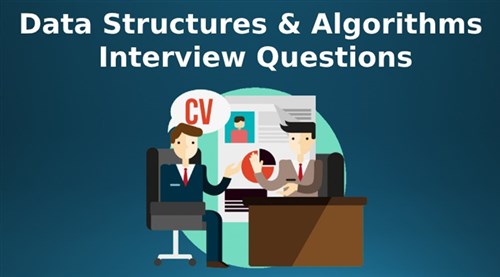.pngL.jpg)
In today's data-driven world, data analysis is an important part of an enterprise's operations. Data analytics is a domain that revolves around data and the extraction of insights from it. It is made up of tools, techniques, and processes that aid data management and analysis, including the collection, storage, and organisation of data. The primary objective of data analytics is applying statistical analysis and using different technologies on existing data to discover patterns and solve problems. With the growing dependency on data today, data analytics is fundamental to creating business strategies and daily operations of a business.
data analytics is a collection of skills and functionalities from various disciplines, such as mathematics and computer programming. data analysts use these skills to carry out analyses that help describe, predict, and improve business results. several data management techniques can ensure strong results, including data cleansing, data mining, data modelling, and data transformation.
Now that you know what data analytics is, let's look at the different types of data analytics.
Understanding What Data Analytics Is:
Data analytics as a domain broadly covers a wide range of methods, steps and techniques used to analyse raw data, both structured and unstructured. Any given data can be put through data analytics techniques to derive insights that can help improve business strategies and product offerings. Data analytics processes help reveal behaviours, metrics and trends free from biases and personal preferences. Such data make up a critical part of any business plan and helps optimise workflows and processes for increased business efficiency.
Consider the manufacturing industry, for example. OEMs generally record their downtime, process runtime, and queued work volume for each machine. They frequently analyse this data for workload optimisation to ensure all their machines operate at peak capacity. This is just one of the industries that data analytics helps improve. Over the years, as data analytics tools and techniques evolve, their applications and results will continue to grow too.
Data analytics is more than just identifying production obstacles. Gaming organisations use analytics for establishing reward schedules to award players, ensuring most players remain active while playing. Content creation companies use most of the leading data analytics techniques to ensure viewers stay addicted to their screens, whether they post, scroll, click or organise what they watch.
Data analytics makes up a fundamental component of every business plan today as it helps optimise business performance. Implementing relevant data analytics techniques into an existing business model can help organisations reduce expenses, increase profitability and identify efficient methods of conducting business. Companies can also implement a data analytics process to analyse customer preferences and trends that could help improve their existing offerings and create better products.
Some of the initial data analytics methods used were created because of SQL. This computing language was introduced in 1979 and enables relational databases to be queried. The consequent data sets are more structured and clean, making them easier to analyse.
Steps in the Data Analytics Process:
There are a few simple steps involved in the data analysis process.
- First, you must determine the data needs of your client or organisation, or understand how data is grouped. You can classify data based on demographic, gender, age or income. Values of this data can either be numerical or divided into categories.
- The next step is the process of data collection. This is usually done using multiple data sources like online sources, computers, environmental sources, cameras and data collection personnel.
- Once you have collected this data, you must organise it before it goes through analysis. This could be done using an Excel document or any similar spreadsheet software that can organise statistical data.
- Finally, the data must be cleaned up. It must be scrubbed and analysed to ensure minimal or zero error and duplication without data remaining incomplete. This final step will help rectify any errors before the data reaches the data analyst for analysis.
Tools for Data Analytics:
Along with a wide range of statistical and mathematical approaches to analysing numbers, the data analytics process has evolved quickly in terms of its capabilities and technological functions. Data analysts today use a wide range of tools and software solutions to gather, store, process and report data and insights.
Data analytics solutions inherently work well with spreadsheet software like MS Excel as it integrates easily. Today, data analysts engage with programming languages to manipulate and transform databases. This is usually an open-source programming language like Python. Other specialised data analytics tools such as R are used for graphical modelling and statistical analysis. SAS is another analytics platform that helps with data mining, while Apache Spark is useful for large data set processing.
A data analyst also needs help while compiling results and creating reports that they communicate with both technical and non-technical stakeholders. Both Power BI and Tableau are tools designed for data analysis and data visualisation. They compile and analyse data and then share the results through easy-to-use reports and dashboards.
Types of Data Analytics:
There are four main types of data analytics. Each of them has a different objective and occurs at various times in the process.
1. Descriptive Analytics:
Descriptive analytics answers questions about what exactly has happened. This technique drastically reduces and summarises large volumes of data to explain results to the stakeholders. These strategies develop KPIs (key performance indicators) that can track failures and successes. Metrics like ROI or return on investment are used across industries. Certain industries also develop specialised metrics to track outcomes and performance. Descriptive analytics requires that analysts collect relevant data, process this data and carry out data analysis and data visualisation. This process gives a deeper insight into performance, both past and present.
2. Diagnostic Analytics:
This type of analytics is aimed at identifying why events occur. This technique is an addition to basic descriptive analytics. It takes insights and learnings from descriptive analytics and goes a step further to discover the cause. The KPIs are probed further to identify reasons for improvement or decline in outcome quality. This is carried out in 3 steps.
- Identifying abnormal behaviour and patterns in data. This could be unexpected changes in metrics or markets.
- Collecting data related to this abnormal behaviour.
- Using statistical techniques to discover trends and relationships explaining this behaviour change.
3. Predictive Analytics:
This type of analytics helps predict what might happen in future. Predictive analytics uses historical data to discover and look for trends to ascertain if they will repeat in future. The tools for predictive analytics give deep insight into what the future holds for markets, businesses, products and customer behaviour patterns. Techniques and methods used for predictive analytics are machine learning and statistics, along with regression, neural networks and decision trees.
4. Prescriptive Analytics:
This type of analytics tells businesses what they need to do. Taking insights from data and learnings under predictive analytics, businesses are empowered to make decisions backed by solid data. This means marketing plans are no longer based on assumptions of any kind. Prescriptive analytics methodologies depend on machine learning strategies that can discover patterns in huge datasets. Analysing past events and outcomes can help determine the range of deviation and scope to improve in the future.
The different types of analytics offer insights that enterprises need for efficient and effective decisions. When you use them together, you will get a strong understanding of your customer and a viable plan for your next steps.
Also Read: Big Data vs. Data Analytics
Applications of Data Analytics:
There is a wide spectrum of data analytics applications across industries. Big Data analysis optimises efficiency across industries in multiple roles. This helps businesses to succeed and hold their edge in an increasingly saturated market.
Among the early adopters of data analytics is the banking and finance industry. Analytics is a major part of the financial sector today and is used for assessing market risks and predicting trends. One example of data analytics in this domain is a credit score. This score is generated by looking at multiple data points to determine the bank's lending risk to an individual. Data analytics also helps in fraud prevention and helps to reduce the liability and risk that financial institutions face.
Data analytics is also widely used in healthcare around the world. It has revolutionised healthcare through various applications like predicting patient outcomes, improving diagnosis and efficient fund allocation techniques. Even the pharmaceutical industry has been revolutionised through machine learning. The task of drug discovery is extremely complex and has many variables. It is greatly simplified through machine learning. Additionally, pharmaceutical companies use data analytics for the prediction of drug sales and to understand their market.
And that's not all. The applications of data analytics are widespread and growing every day. More data is being collected in one day today than was collected for an entire year about five decades ago. This means there are many new opportunities for applying data analytics in new businesses, the advancement of science and life in general.
Methods and Techniques of Data Analytics:
Data analysts use several techniques and methods for data analysis.
1. Regression analysis:
This is a set of processes that use statistics for estimating the relationship between variables. This helps in determining how the changing of one or more variables can affect another. One example of this would be, investment in social media platforms can result in higher sales.
2. Monte Carlo simulation:
A Monte Carlo simulation is used to model the probability of various outcomes within a process that can't be predicted accurately because of random variable intervention. This is used mostly for risk analysis.
3. Factor analysis:
This is a statistical method in which analysts take huge data sets and reduce them to smaller, manageable chunks of data. This helps in discovering patterns and hidden trends. In a business environment, factor analysis helps in exploring and improving domains like customer loyalty.
4. Cluster analysis:
Cluster analysis can be defined as a method used to classify cases or objects into clusters or relative groups. It is used to show data structures that can lead to a change in behaviour or business functions. For example, insurance companies use this method for investigating why a certain location has a higher number of accident claims. This could help identify and solve hidden problems.
You May Also Like: What is Big Data Analytics and Why Is It Important?
5. Time Series analysis:
This is another statistical method of data analysis that works with trend analysis or time-series data. Time series refers to data found in a string of specific intervals or times.
6. Sentiment analysis:
The sentiment analysis method uses tools like text analysis, computational linguistics and language processing, among others, to identify feelings expressed through the collected data. The previous methods we have discussed all deal with data that can be quantified or measured. However, sentiment analysis aims to classify and interpret qualitative data by sorting it by theme. Sentiment analysis is widely used to find out how a customer perceives a brand, service or product.
A data analyst is standing at the point where IT, business and statistics meet. He combines these three domains to help enterprises and business organisations to meet and exceed their goals. The main role of a data analyst is increasing the efficiency and improving the performance of an organisation or team through data and patterns. According to a report by O*NET, data analyst jobs in the market are projected to grow by 8% from 2019 to 2029. The salary and other benefits data analysts receive from their organisations vary based on their employer and geographical location. However, in 2019, data analysts earned an average of $94,280 per annum. Give your career the boost it needs and enrol in a data analytics training course today.




.pngM.jpg)


COMMENT